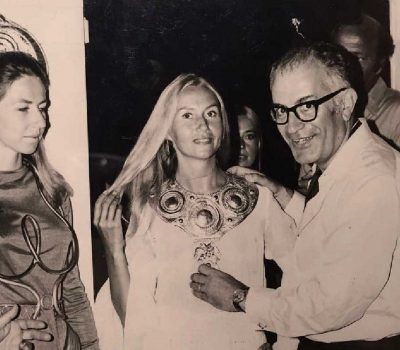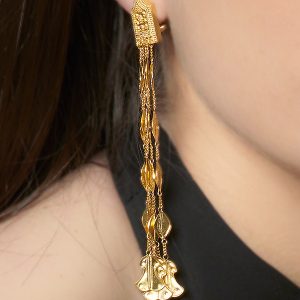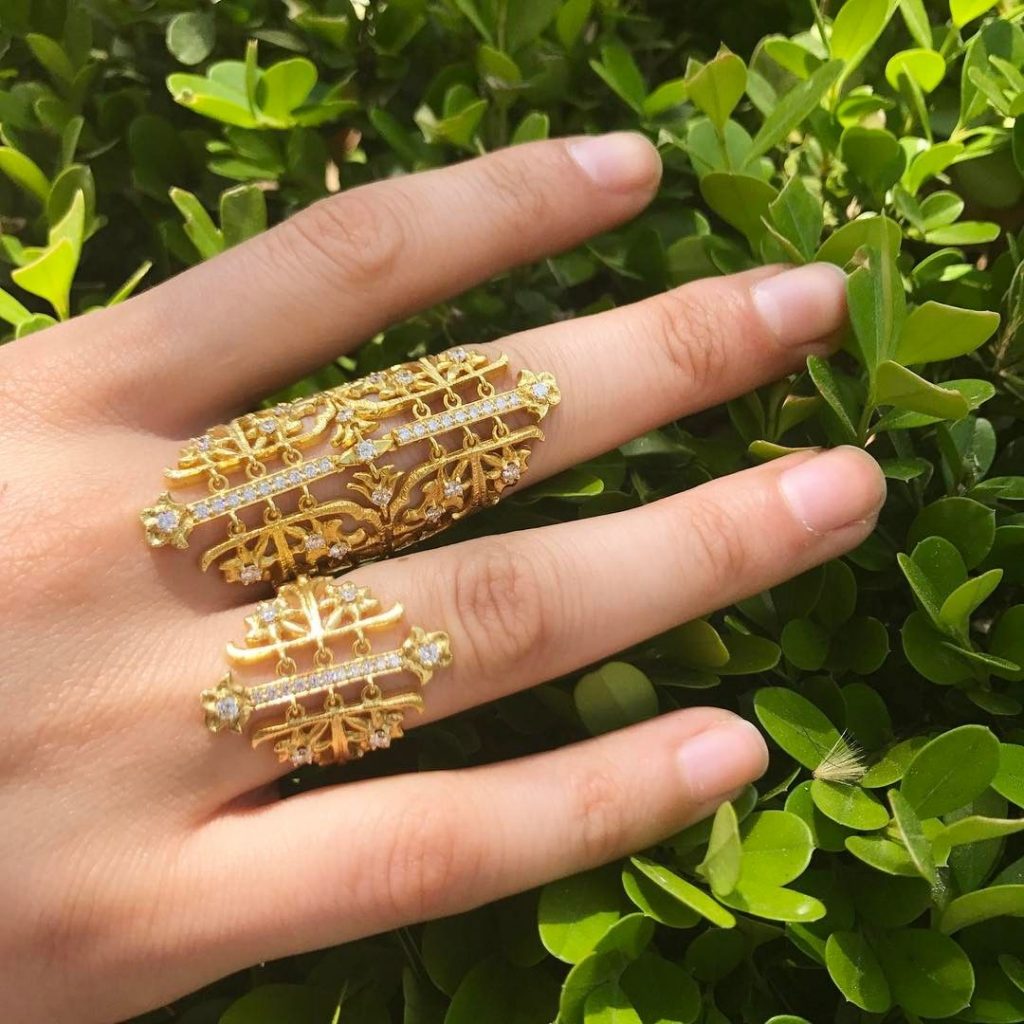
GREECE
Four generations in, Ilias Lalaounis was born into a family of jewelers from Delphi, Greece. As a young man, he recalls working in his uncle’s workshop in Athens when, “I was asked by two foreign ladies whether I could reproduce for their personal use two brooches (from Mycenae) which they had seen in a museum… I began to concentrate on the work of the ancient goldsmiths.”
Along with a group of artisans and technicians, Lalaounis revived ancient techniques alongside modern processes. He decided to work with gold, ‘the most human material’ and founded the Greek Jeweler’s Association. His exhibitions spanned from the 1950s through 2000s, inspired by Hellenistic, Classical, and Minoan art, as well as Persian, Byzantine, Chinese art, and nature, space, science, using 18 and 22 karat gold.
The global exhibitions reflected his success; his creations have been presented in the Smithsonian Institute, the Victoria and Albert Museum, La Chapelle de la Sorbonne, the Pushkin State Museum of Fine Arts, the National Art Museum of Romania, the Museum of Turkish and Islamic Arts, and many more. At its geophysical height, the Lalaounis brand had over twenty outlets, including Athens, Paris, Zurich, Geneva, Vienna, New York, Tokyo, and London. Now the brand continues online, with fewer brick and mortar locations but ever-increasing success.


In the 1970s, Lalaounis’ collection ‘Blow Up’ draped the human body in gold jewelry in unique creativity, and was first presented in Paris. It caused a sensation and established Lalaounis as a fashion icon. In the 1980s, the Illion Collection included a tiara inspired by the diadem found by Henry Schliemann. Discovered in the late 1800s on the hill of Hissarlik in Turkey, it was considered to be treasure of Troy. Today, the inspiration continues with the Helen of Troy collection.
Visitors can see these and numerous other key collections at the Ilias Lalaounis Jewelry Museum, where each piece reflects the storytelling mastery of Ilias Lalaounis. The museum (ILJM), under the inspired directorship of his youngest daughter Ioanna, is a non-profit and devoted to jewelry art, the first to do so in a nation full of history and museums.
Ioanna says “We started with the permanent collection which was the core of the museum and all of my father’s archives, library, etc. From there we created a prototype museum, the first of its kind in Greece and one that would be able to not only promote ancient Greek goldsmithery but also to try and bring in a new spirit for jewelry in Greece.”





Helen of Troy Collection

In fact, all four of Ilias’ daughters continue the work of family jewelers in their roles growing the Lalaounis brand. Aikaterini Lalaouni runs PR for the Greek market and is co-CEO Greece with Maria Lalaouni Boutari, the Creative Director. Demetra Lalaouni Auersperg-Breunner is the company’s International CEO.
Maria trained as a goldsmith, and her collection, Aurelia, was inspired by the pierced openwork of a flower motif, typical of the Byzantine era. She found it in the art books kept in the Lalaounis company library. She continues the work of her father with a team of craftsmen, and uses the old techniques of hand-braided chain, filigree, and hand-hammering that Ilias had revitalized decades ago.




Aurelia Collection by Maria Lalaouni Boutari

The same way Ioanna and Maria modelled the jewelry in their youth, so the next generation continues; Maria’s daughters, Athena and Lila, and Demetra’s daughter, Alexia, showcase the jewelry. Laoura Lalaounis Dragnis, daughter of Aikaterini, manages the social media. She remarked on the coherence across the family business and its appeal to everyone familiar with the brand.
“They like that they open a magazine and see my cousins, just like they saw me, like they saw my aunts,” she said. “It’s not just a marketing tool. It’s our story, it reflects who we are.”
Ilias understood the power of stories for those who buy the jewelry also.
“Each jewel is not merely a thing of beauty with a life all its own… sooner or later it is grafted onto the life of the individual woman or man who wears it, and evokes distinct and sometimes strong feelings in that person… Each piece has for its owner a symbolic or sentimental value, and thus becomes part of his or her life.”
